To Dream of a New Kind of Making
Cecilia Ramon and Carla Stetson set out to create a work together, collaborating on every detail from conception to installation. Ann Klefstad writes on the results, on view at the Duluth Art Institute's "Confluence/Confluencia" show.
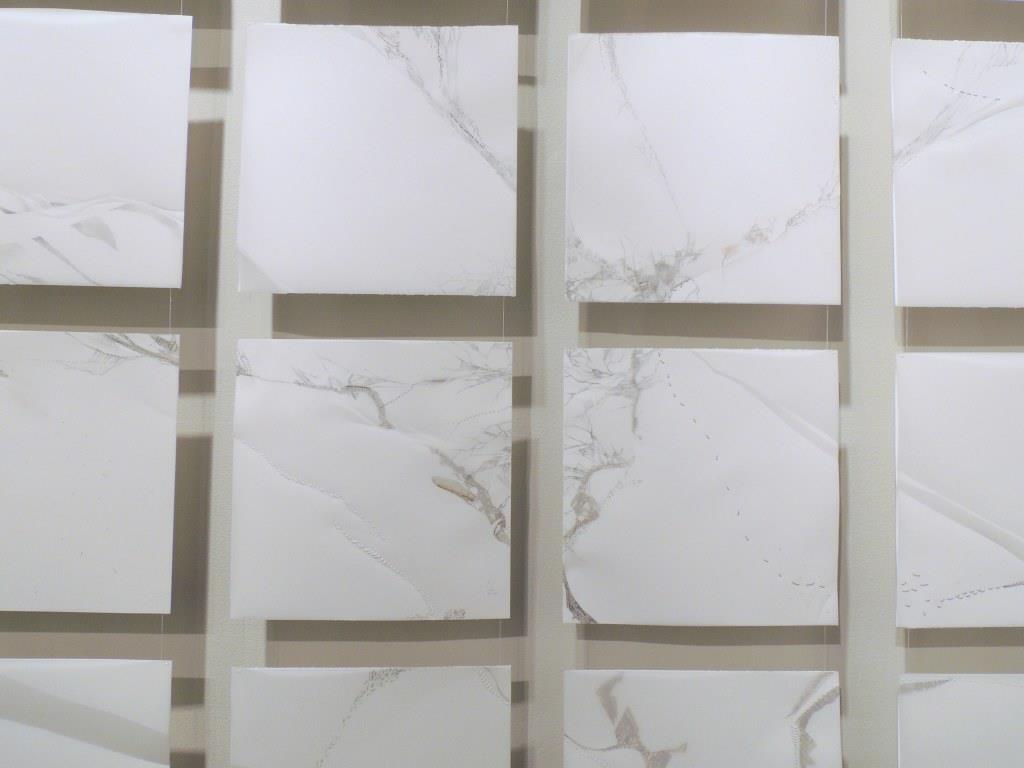
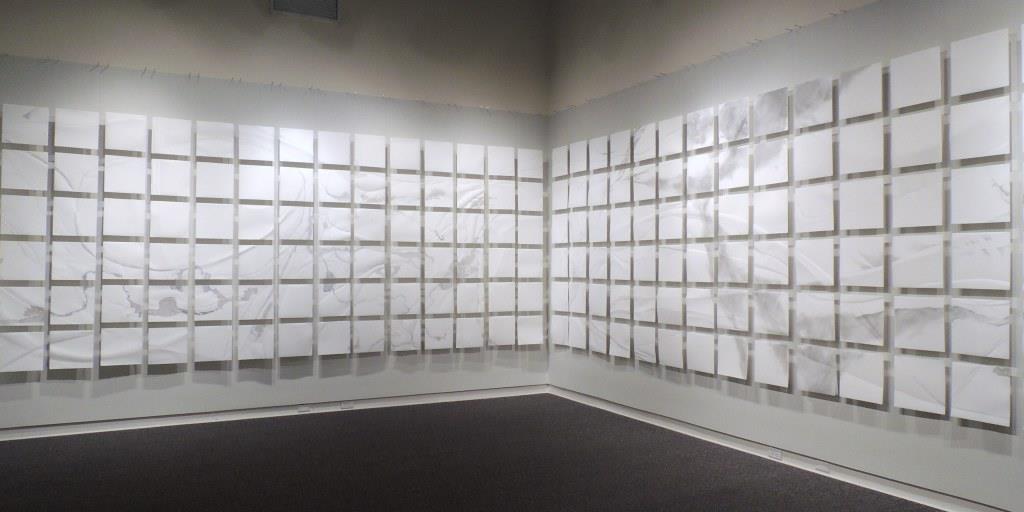
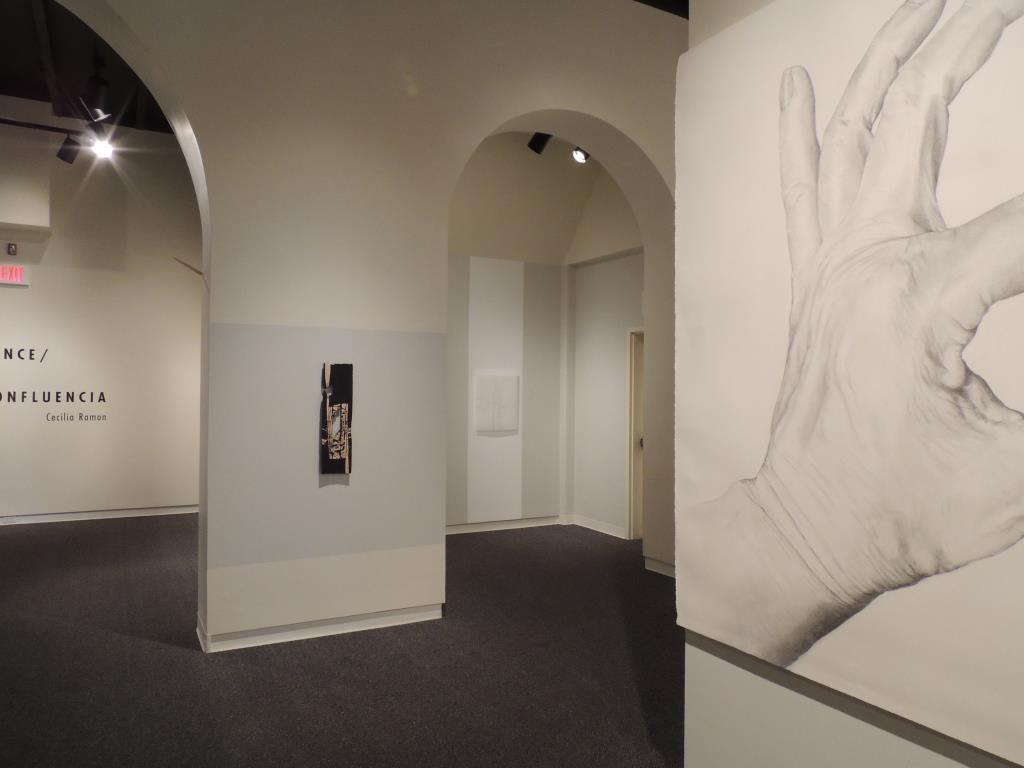
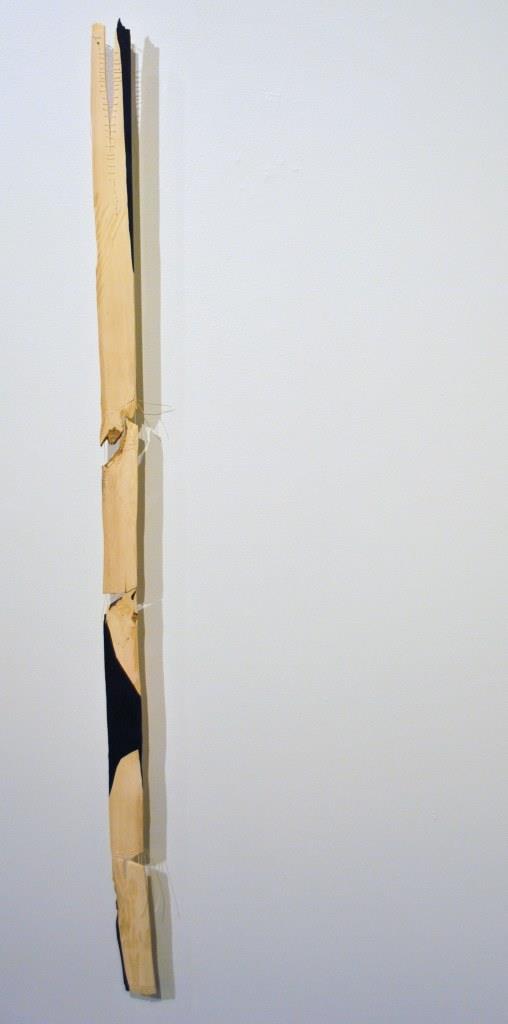
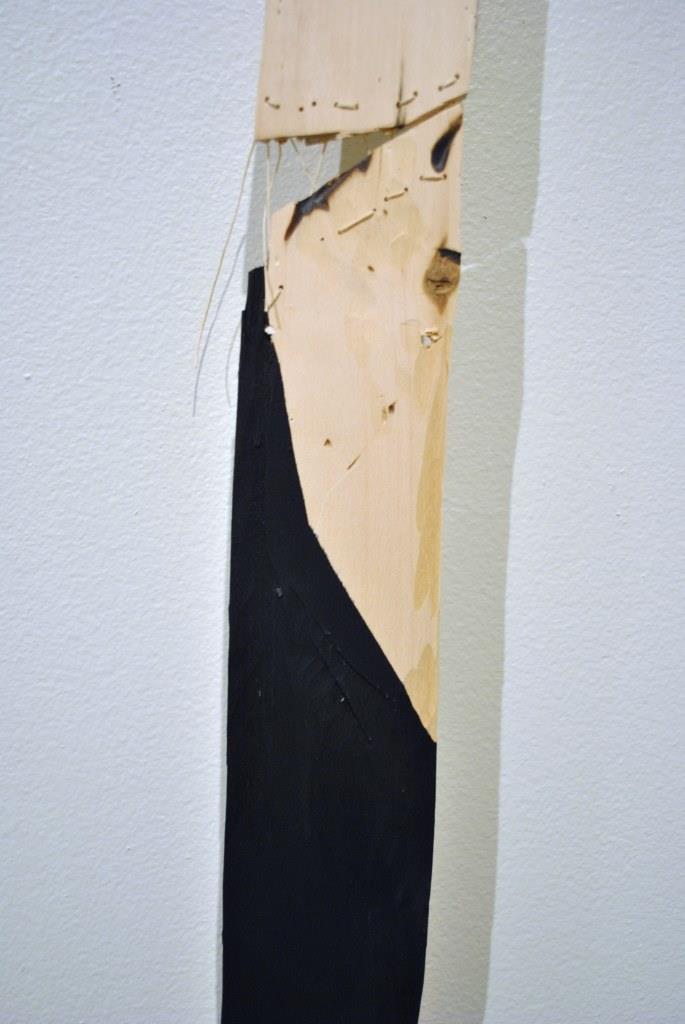
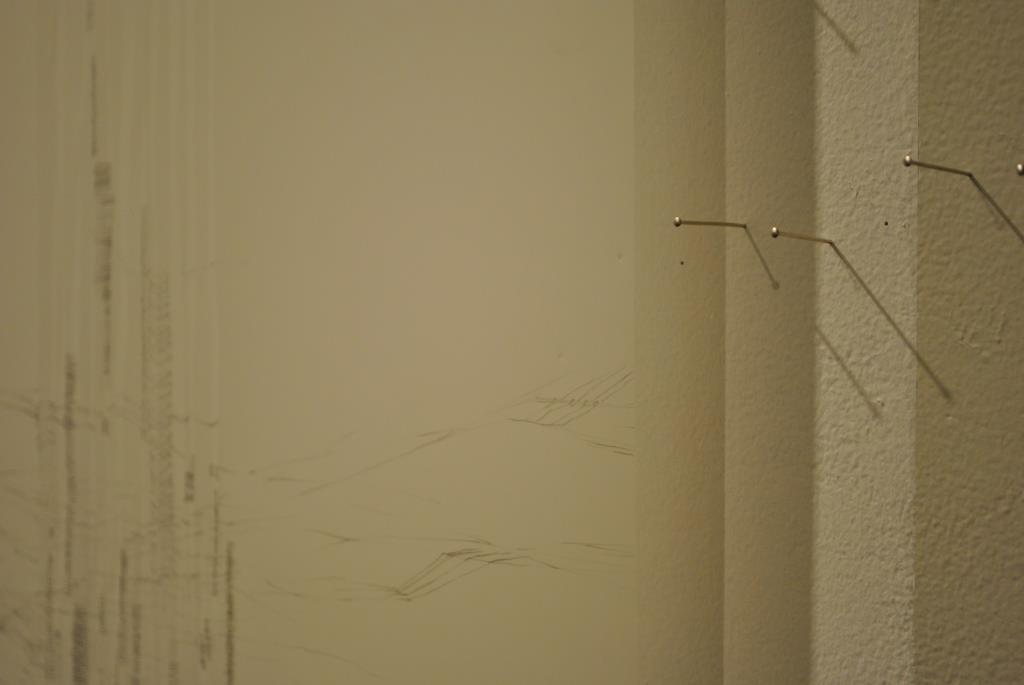
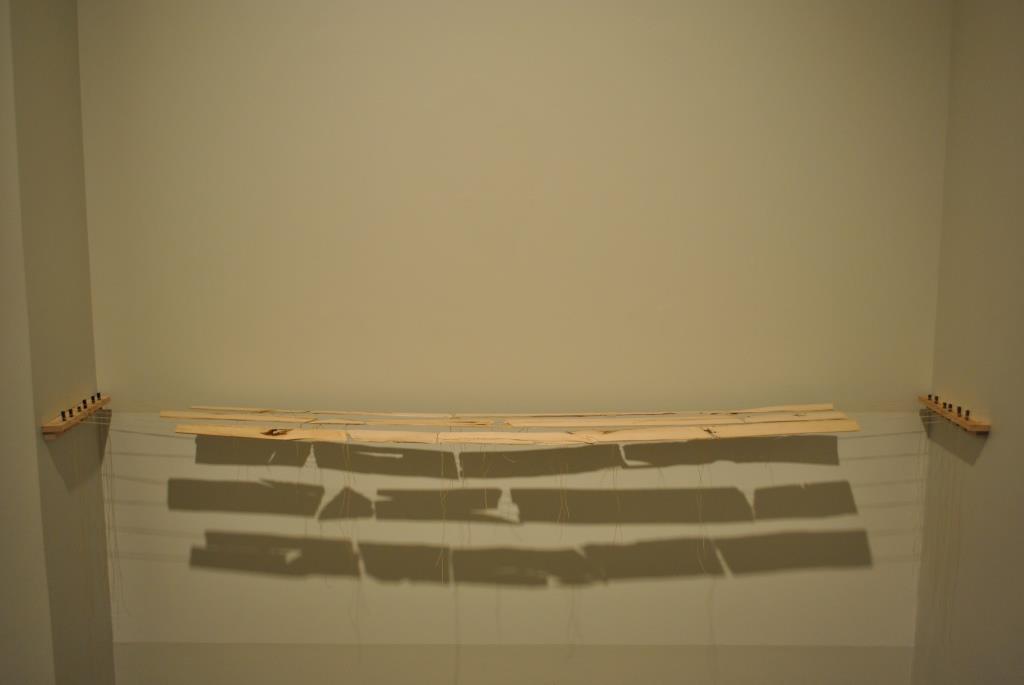
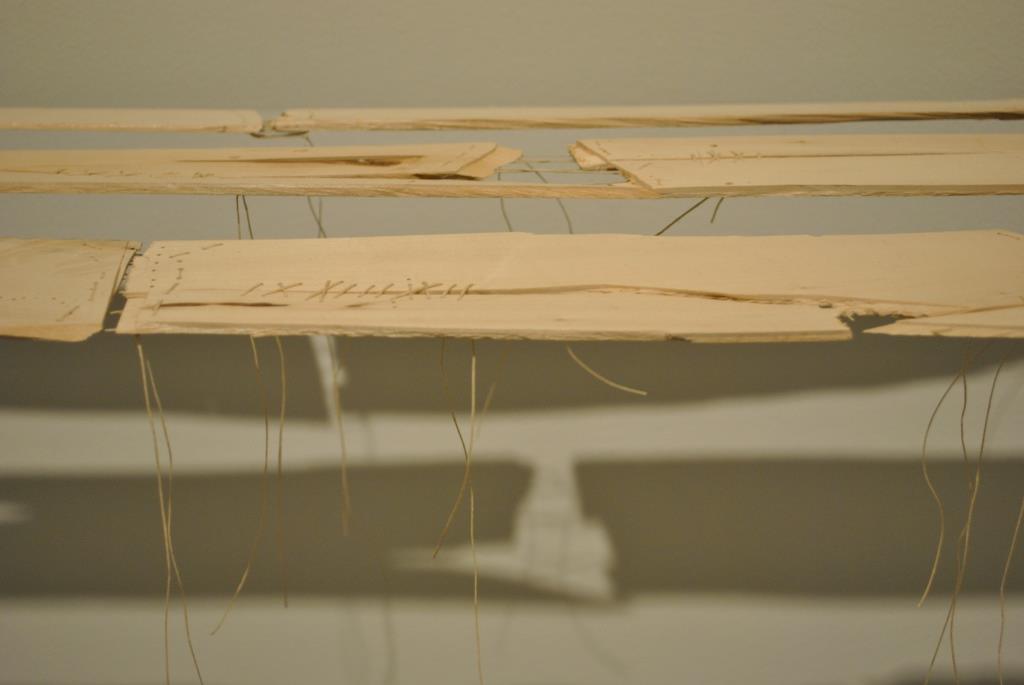
“WHO HAS SEEN THE WIND?” asks the Christina Rossetti poem. No one—but we see what it does. It’s something like this that Confluence / Confluencia, now on view at Duluth Art Institute, seems to try for: one, to think about ways of portraying the currents and flows of the transparent atmospheres in which we live; and two, to think of the artist’s actions in terms of what they change.
A collaborative exhibition by Cecilia Ramon and Carla Stetson, Confluence is installation-based. The individual works interact, reaching into the space and directly altering the walls, carrying themes of surface and its transformation into several media. Both artists have works done individually in the show, but the centerpiece here is the large installation Troposphere, a roughly 35′ x 12′ continuous field of three-dimensional vellum-and-paper squares hung a few inches out from two walls. This work they created in partnership, initiating the process together and continuing it over months by mail.
Says the gallery essay, “The work in Confluence speaks of migrations across land and air, layered experience, the porosity of boundaries, and the dynamic nature of subjectivity.” The project arose out of the artists’ shared interest in maps, in the currents, in migration and travel. They also hope to provide new models of creation—based not so much in the hyper-individualism of the traditional art-world, but instead rooted in collaboration and a turning outward to the social and natural worlds.
Carla Stetson and Cecilia Ramon have always been friends, and since long before this project, they’ve each admired the other’s work: they have similar sensibilities. Cecilia Ramon grew up in Argentina and moved to Duluth years ago; Carla also lived in Duluth for 20 years, and then she moved to Ithaca, NY, several years ago. The two women stayed in touch while separated by that cross-country distance, and they arranged to show their work together at Concordia College in St Paul in 2010, in an exhibition called Flight. It was then that they began to think of actively collaborating to make work, rather than simply showing together.
They started the process by working in the same studio together for a period of about 10 days. They shared readings and discussed alternatives. Here is Carla’s account of that beginning:
As the show at the Duluth Art Institute took shape, we began a serious discussion of ideas and shared books and readings, and we wrote to each other. We wrote several versions of statements about the work we wanted to do. I had been working for some time on a series that evolved from my interest in satellite imagery and cartography. For the piece, Confluence, I brought a completed mixed media drawing to show Cecilia and she resolved to respond to it in wood as a sort of “call and response” piece. But we also wanted to develop a piece that we started and worked on together so completely, that it would seem authored by a third entity, and that was Troposphere. . . .
We began the work together in the studio . . . experimenting with various materials—thinking about sky, air, wind, layers, and transparency. We decided the piece should evoke the atmosphere from different points of view- looking up at the sky, but also looking through the sky towards earth as when flying. At that point, we were working so completely together we didn’t remember which person did which individual square. There was an ease of working that was just marvelous; it was hard to leave that space. We developed labels for each section of wall and made a plan for who would start work on each part.
Map/collage, all-white, linear, and gray/stormy were our tentative names for each section. Once we were working again in our home studios, we sent photos to each other via e-mail and then would phone-conference to discuss what was working or interesting.
Works done by each artist are in the show along with the collaboration Troposphere. Carla made huge wall drawings of her own hand and a topological drawing of Lake Superior; Cecilia made sculpture-drawings with wood, cord, and nails that use shadow as line and form. These works were done simultaneously with their joint efforts on Troposphere.
They shipped the 12’ x 12’ panels of Troposphere back and forth by mail to work on them. They would stack the squares of creased and scored vellum, sometimes pierced by rows of stitching, sometimes with graphite drawing on them, into boxes and deliver them up to the post office. They worked on the squares individually, knowing their placement in the final grid.
Carla remarked of the process:
When we worked separately we emailed photos of the work and then talked on the phone as we looked at the photos, discussing the parts we thought were good, and what worked. When we got a package of new squares in the mail, we would call each other and talk about the direction we would take them in. I don’t think of our discussions as being directive in any way, more that we were just so excited about having a new starting point or an idea to extend the piece that we wanted to share our thoughts. We had great trust in each other.
Cecilia says, “We mailed to each other several rows at a time of Troposphere and each of us had total freedom to work on or modify or alter what the other person did. It was an incredible learning experience, where total new solutions were found.”
The collaborative piece is an extended meditation on the troposphere—the portion of the earth’s atmosphere that supports life. One can read it as if one were high above the earth, looking down at the contours and flows and grids of its waters and air, overlaid on a grid of the human built environment underneath; or one could see it as if on the ground below, staring up into the clouds, their currents and the significance of them for us here on earth.
Says Cecilia about the format:
We were interested in a modular piece. At a practical level [the grid] made the piece easy to send to each other. But most importantly, conceptually, the grid offered many possible interpretations: the relationship between nature and cultural production, the use of grids in cartography and topography and the grids that are used in photographs from satellites across the globe.
We wanted to develop a piece that we started and worked on together so completely, it would seem authored by a third entity.
Many of the lines and contours of this large work (about 12′ x 30′, wrapping around a corner) are created with light and shadow, the scored vellum creating sharp lines lit above or below because of its springy curves. Some lines are created with pierced rows created with a sewing machine — precise holes, sometimes stitched, sometimes not. The work’s squares hang in lines from fine cords, out several inches from the wall, and have a dematerialized materiality, an insistence on space rather than form—the work evokes formed space, rather than forms in space.
The two artists’ individual works contain the elements that have come together in Troposphere to create this expansive significance. In the individually made pieces the characteristics are seen differently—Cecilia’s creation of line and form using shadows and light, say, or Carla’s affinities with paper and graphite; they have a more private significance, more material, perhaps less available.
Cecilia’s use of thin slats of wood, broken, bent, stitched, sometimes shadowed with black paint; her use of small finish nails hammered into the walls to form shadow fields—these things relate to a very specific human history rooted in the years of terror in Argentina (where she grew up), and the ways in which grace and strength often must find themselves in threat and fear, must create themselves by incorporating what can be found in that struggle.
Carla’s drawings of hand and lake, the way the materiality of the world resists metaphor and insists on its own nature, relate to her history of both bronze sculpture meant to embody public histories and and her long work in collage, using powerfully iconic images of faces, hands, and plumage, foliage, to create the strong sense of the body’s excess—that our embodied lives extend far beyond meaning, into the inchoate.
Together these two aesthetic histories create a third sensibility that arches over both like the sky. Troposphere, done by both women in constant nonverbal dialogue, has found new ways to incorporate their separate insights into a superbly graceful field in which much happens, but in ways that are inaccessible to language. It is a work that addresses the flows of its own making—the way sensibilities flow together and apart—and also creates a matrix that allows a view of other fluid forces.
Related exhibition and artist information: Confluence / Confluencia is an exhibition by Cecilia Ramon and Carla Stetson, in the George Morrison Gallery of the Duluth Art Institute. There is a gallery talk March 11m and the show will be on view through March 27.